|
BULB LOG 02 --- 11th January 2006
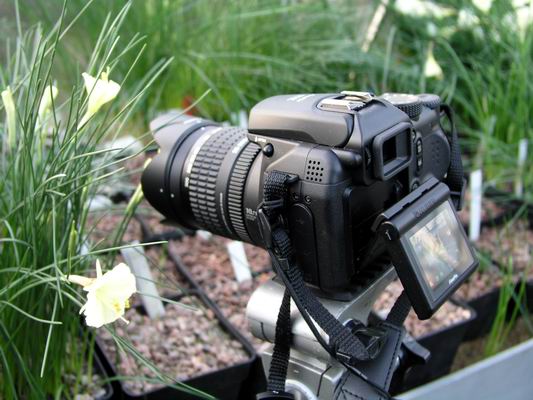
New camera
I always like to keep an open mind and I can be swayed by a good argument, so when I said, a few logs ago, that I was not in a hurry to get a new camera I did not have all the facts in front of me. While reading my National Geographic magazine I was taken by an advert for the latest Fuji Finepix camera that boasted a fixed lens with an optical zoom equivalent to 28mm to 300mm (in 35mm terms). That focal range is all that I would require and was one of the main reasons I was considering getting a digital SLR with a selection of lenses. My big worry with a digital SLR is the problem of dust getting onto the sensor, when you change lenses, which causes spots on your pictures - a fact that the camera manufacturers like to play down. After reading the online reviews for the Finepix S9500 zoom I was convinced I had found the solution for my photographic needs, so I bought one.
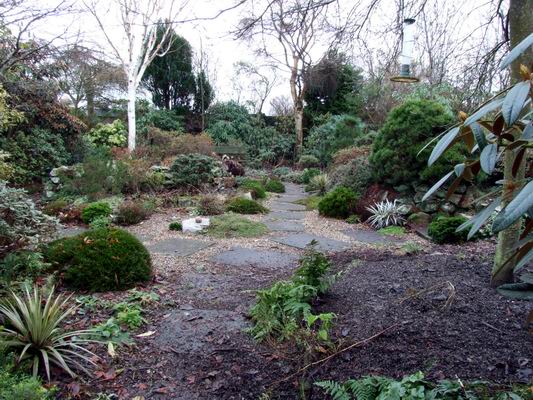
Wide angle garden view
Now I have to go through the learning process necessary to get the best out of my new tool. To show the focal range this is a wide angle, 28mm, shot of the garden.
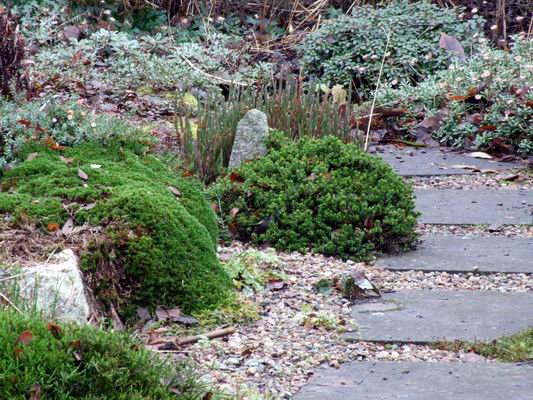
Telephoto view 1
The next two pictures are taken without moving the camera just zooming into the 300mm setting.
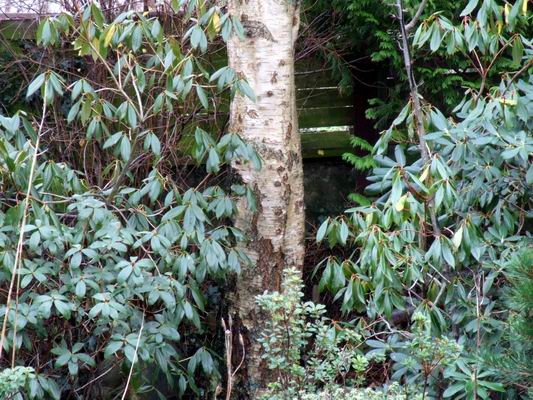
Telephoto view 2
I am impressed with this focal range: it opens up photo opportunities to me that I have not had since moving to digital. No camera is without out its faults and limitations but I am convinced that this one will serve my needs very well.
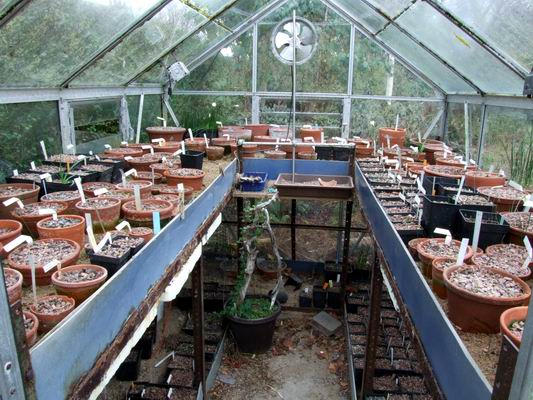
Frit house 08.01.06
There is very little growth showing above ground in the frit house but I still have to make sure that the plunge does not get too dry as the roots and shoots will be slowly extending ready to explode into growth when the temperatures rise a bit. This is the first time I have been able to take a digital picture that takes in as much of the scene as this using the 28mm wide angle focal length.
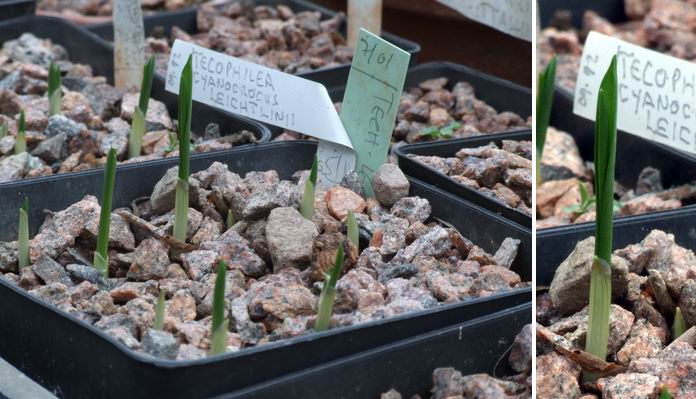
Tecophilaea shoots emerging
I also keep some of our Tecophilaeas in the frit house; these are in plastic pots sitting on top of the sand plunge. As you can see their shoots have pushed through and will sit in this state until around late March or April before the buds open and they flower. I will water directly into these pots occasionally if I think they are getting too dry but I do not want them to be over wet either, especially as there is the risk that we will get a prolonged period of freezing temperatures. It is a fine line between having enough water to keep the roots healthy and being too dry at this time of the year.
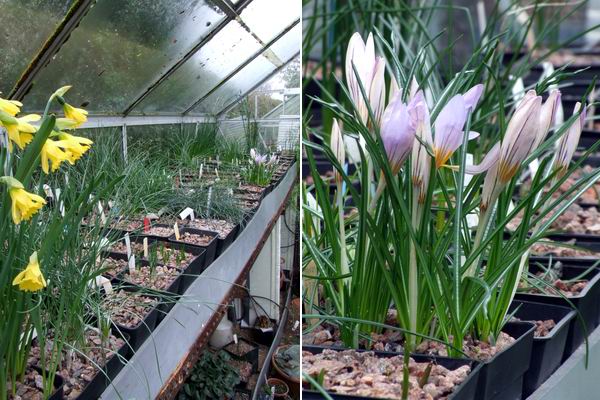
Focal range in bulb house
One more example of the versatility of the great zoom range of the S9500 camera is seen in these two pictures in the bulb house. Without moving the camera the wide angle shot on the left shows most of the plunge down one side and moving the zoom to 300mm I can fill the frame with Crocus imperati suaveolens. The picture also reveals how little things have changed since last week - with day time temperatures at around 5C to 7C, there are not many obvious signs of new growth.
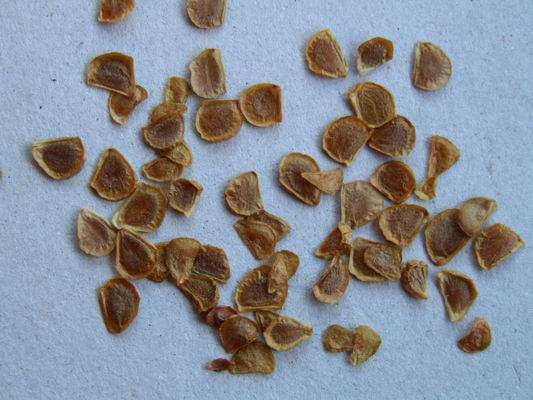
Nomocharis seed
This is the time of year that I like to sow my Nomocharis seed and other small lilies like L. nanum and oxypetalum. I have found in the past when I sowed them in September that they can germinate very quickly if the weather stays mild and then I have all these tiny seedlings to take through the dark cold days of winter. It is much better to sow them now and then they germinate in the spring. All seed that looks like this, such as Fritillaria should be sown on the surface and only covered with a few centimetres of gravel - my experiments show they will not germinate if planted
deeply.
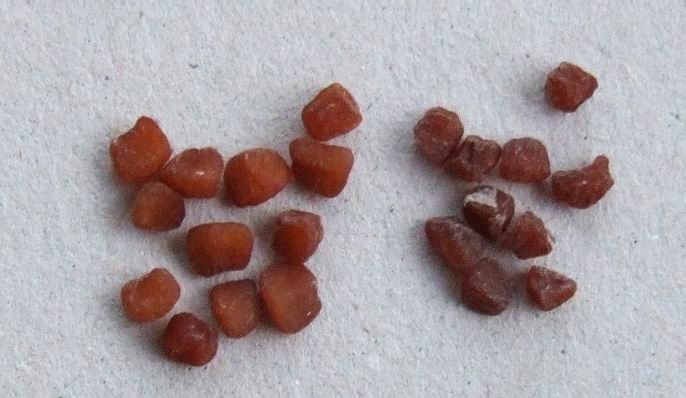
Cyclamen seed
I have just received some Cyclamen seed which I have soaked over night, soaked seed on the left, dried seed on the right, to help it germinate better. The first thing that the seeds have to do when we sow them is to soak up moisture. It would take them a lot more time, in the compost, to absorb as much moisture as they do being submerged in water overnight. I also add the tiniest amount of soap by rubbing my finger lightly on the soap then dipping it into the water to break down the surface tension making it easier for the seed to take up the water. For the last few years I have been sowing my Cyclamen seed at depth with very encouraging results.
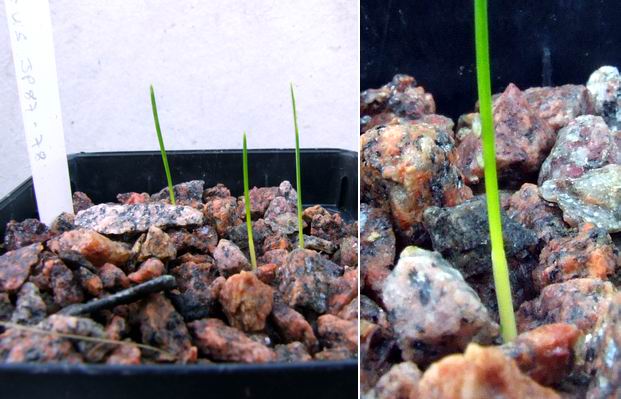
Crocus seedlings emerging
On checking the seed pots outside I found that some of the Crocus and Narcissus seeds are now germinating. At this stage I take them under glass where they get protection from the weather and I can keep a better eye on them to make sure they do not fall prey to slugs which can devour an entire pot of bulb seedlings in a matter of hours. It was only when I got this pot up to eye level and was focusing in to take this picture that I noticed two tiny aphids about half way up one of the leaves - these were quickly rubbed off.
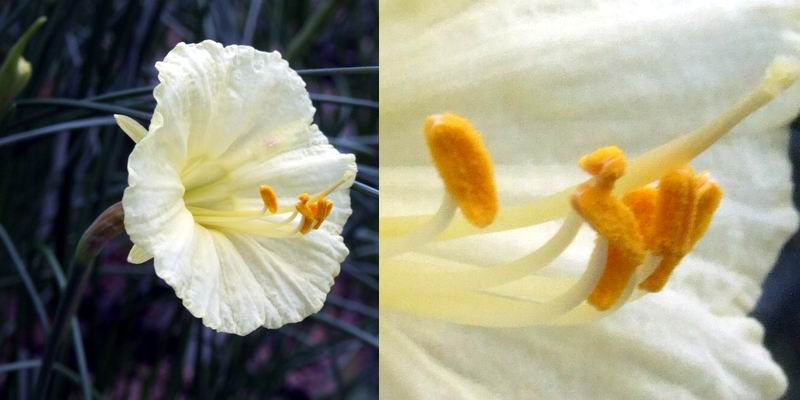
Narcissus with ripe pollen
Talking about seed we also have to remember that there is a lack of pollinating insects around at this time of year and if we want a good crop of seed from our bulbs we must transfer the pollen ourselves to the stigma when it is ripe, using a paint brush.
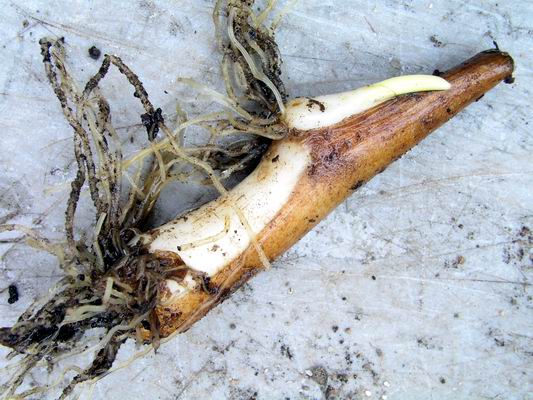
Erythronium bulb
It will be a while before we will see any erythroniums in flower but their bulbs are also preparing them selves underground with roots growing not only from the main growth point at the base but also the offset half way up the bulb is sending its roots out - what a lot we have to look forward to.
^ back to the top ^
|

